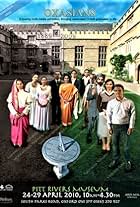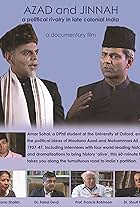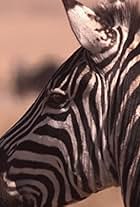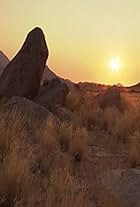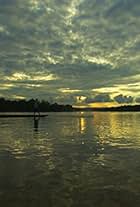Advanced search
- TITLES
- NAMES
- COLLABORATIONS
Search filters
Enter full date
to
or just enter yyyy, or yyyy-mm below
to
to
to
Exclude
Only includes titles with the selected topics
to
In minutes
to
1-18 of 18
- A gang of campers are led into a wilderness that includes an island haunted by an evil spirit.
- A group of holidaymakers have booked themselves a dream trip with the Wild West White Water River Boat Company. Their journey will take them along the great Colorado so they can experience first hand the beauty of the Grand Canyon.
- Two half-brothers get to know each other while sailing up a river in an inhospitable region in search of the place where their father was found dead.
- Oxasians explores ten South Asian figures who studied at Oxford University between 1871 and present day. The film takes the viewers on a journey of how their time at Oxford influenced these key figures who have gone on to contribute to both Britain's and South Asian history. The key figures in this story are Solomon Bandaranaike, Ved Mehta, Princess Bamba Sohpia Duleep Singh, Cornelia Sorabji, Manmohan Singh, Sir Sarvepalli Radhakrishan, Mansur Ali Khan Pataudi, Benazir Bhutto, Iftikhar Ali Khan Pataudi and Indira Gandhi.
- A handful of members in the college fraternity I Phelta Thi go into business as streakers for hire in order to replenish their fraternity's depleted funds.
- This rare 60-minute documentary produced by Talking Pictures Ltd, explores the political ideas of two rival Muslim leaders between 1937 and 1947. Maulana Azad, the long-serving president of the Indian National Congress and independent India's first Minister of Education; and Mohammad Ali Jinnah, the foremost leader of the Muslim League and Pakistan's first Governor-General. Written and presented by Amar Sohal, a DPhil student at Merton College, University of Oxford, this multifaceted film includes interviews with four world-leading historians: Farzana Shaikh (Chatham House, London), Faisal Devji (St Antony's College, University of Oxford), Francis Robinson (Royal Holloway, University of London), and Shruti Kapila (Corpus Christi, University of Cambridge). Uncovering their attitudes towards liberal democracy, Islam, and Indian history, culture and geography, it shows how Azad and Jinnah's political thought often diverged, but on occasions thrillingly converged, as the subcontinent's fate hung in the balance. Full of fresh insights that crush the popular myths surrounding the turbulent decade before independence and partition, the stories of these two illustrious careers are consistently brought into dialogue with those of their equally eminent contemporaries: Jawaharlal Nehru, Mohandas Karamchand Gandhi, Liaquat Ali Khan, and Sardar Patel. Scholarly commentary is interspersed with dramatizations that bring history 'alive'. Aaron Virdee plays Azad and Amerjit Deu plays Jinnah.
- Tectonic and volcanic activity created the Great Serengeti Rift and the giant Ngorongo crater, which houses an isolated population of species such as wildebeest and lions which normally participate in the greatest land animals migration, but here are prone to excessive incest, especially since Maasai grazing grounds lock out wild relatives. Other lakes with peculiarities house or host such remarkable populations as most of the world's small flamingos.
- Namibia's Namib desert is the result of Atlantic winds eroding ancient mountains. Extremely hot and arid, it requires elaborate adaptations from wildlife and rare tribal populations.
- The Okavango Delta, in northern Botswana, comprises various wetlands, some (river arms and marshes) deep enough for hippopotamuses to live in, many drying out many months, some barely seasonal waterholes. Many species (like buffalo) and people migrate in and out on the flood rhythm, while only the Bushmen survive all year in the neighboring Kalahari desert.
- For 2000 miles, the mighty Zambezi flows from the Zambian highlands trough Angola, Botwsana and Zimbabwe to Mocambique, to end in the Indian Ocean. Its immense water volume has a massive impact on wildlife in its huge flood areas and trough erosion reshapes its own bed, most spectacularly at the Victoria falls, the world's greatest waterfall.
- Spotted Hyena. Thief, coward, scavenger... That's the reputation that precedes them. It couldn't be further from the truth. Hyenas are opportunists. If they need to steal, they will. If caution is the better part of valor then they're cautious. And they're never going to say no to a free meal - even if it's the scraps left behind by other predators. When they're finished with a carcass, all that's left on the ground is a wet spot. A large enough gang can completely consume a wildebeest in 15 minutes - skin, flesh and bones. Waste not want not is the rule by which they live. And unlike some other predators, hyenas are dominated by females. Preserving the Matriarch's bloodline is everything. We follow a gang as it strives to thrive. The oldest female in a new litter will be the successor to the 'throne'. She will be the new matriarch when her mother eventually dies. Sadly, her mother dies before her time, and the young female becomes the gang's new leader. But not for long. She is killed by lions - a common occurrence as most hyena deaths are caused by their nemesis. Now the youngest female, who was born with virtually no social standing, becomes the new matriarch. This is now her gang. And her first female offspring will stand in line as the next heir. Protecting the bloodline of the dynasty is critical. The entire future of the gang depends upon it.
- A wilderness of extremes. How do these uniquely diverse, ancient people coexist alongside wildlife found nowhere else in the world?



